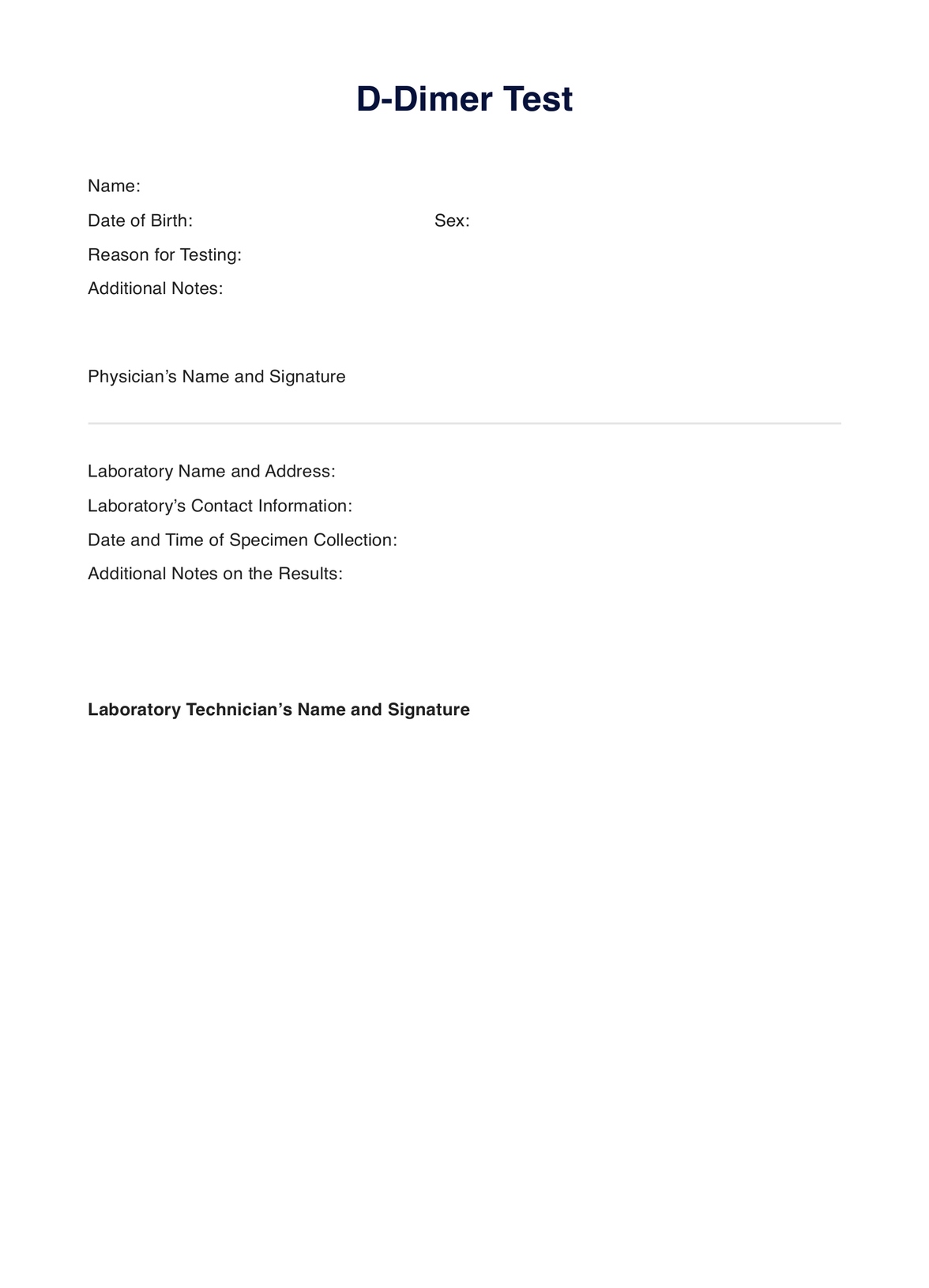Physicians, their assistants, and nurse practitioners are the healthcare professionals who typically request a D-dimer test.

D-Dimer
Be more familiar with the D-dimer test. Click here for a quick guide, a free request form, and a clinical notes template.
Use Template
D-Dimer Template
Commonly asked questions
They are used when the referring physician suspects that the patient is suspected of having a blood clotting condition because of their symptoms or when they??re undergoing anticoagulant therapy sessions.
The sample collection can take a few minutes; however, the processing, analysis, and interpretation of results.
EHR and practice management software
Get started for free
*No credit card required
Free
$0/usd
Unlimited clients
Telehealth
1GB of storage
Client portal text
Automated billing and online payments











